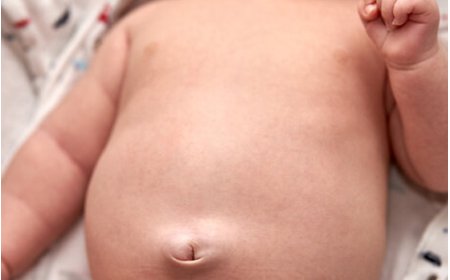Complications of labor and delivery

Introduction:
Hello, curious minds! Today, we're going to embark on a journey to explore something called "Complications of Labor and Delivery." It's about the challenges that can happen when a baby is born. While childbirth is usually a joyful event, sometimes there can be difficulties that need special attention. Let's learn about these complications, how to identify them, and what can be done to ensure safe and happy deliveries in India.
What Are Complications of Labor and Delivery?
Complications of labor and delivery are like little roadblocks that can occur during childbirth. When a baby is ready to be born, it's like a big adventure for both the baby and the mommy. But sometimes, things may not go as smoothly as planned, and that's when we talk about complications.
Signs and Symptoms of Complications of Labor and Delivery:
Complications of labor and delivery can show these signs:
- Slow Progress: When labor is taking longer than expected, and the baby is not coming out.
- Fetal Distress: The baby's heart rate may show signs of stress during labor.
- Bleeding: Excessive bleeding after delivery can be a sign of complications.
How Are Complications of Labor and Delivery Classified?
Complications of labor and delivery can be classified into different types based on what's causing the difficulty. Some common types are:
- Prolonged Labor: When labor takes longer than usual, and the baby is having trouble moving down the birth canal.
- Cephalopelvic Disproportion (CPD): This happens when the baby's head is too big to fit through the mother's pelvis.
- Fetal Distress: When the baby is showing signs of not getting enough oxygen during labor.
Causes and Triggers of Complications of Labor and Delivery:
Complications of labor and delivery can be caused by various reasons:
- Baby's Position: If the baby is not in the right position for delivery, it can lead to difficulties.
- Mother's Health: If the mother has certain health conditions, it may affect the progress of labor.
- Baby's Size: If the baby is larger than average, it can make delivery challenging.
Risk Factors with Examples of Complications of Labor and Delivery:
Some factors might increase the chance of complications during labor and delivery:
- Premature Birth: If a baby is born before the due date, there may be a higher risk of complications.
- Mother's Age: Older mothers may face more challenges during labor and delivery.
- Multiple Births: If a mother is having twins or triplets, there could be increased risks.
Types of Complications of Labor and Delivery with Detailing for Each Type: Complications of labor and delivery can include:
- Prolonged Labor: When labor takes much longer than usual, and the baby may get tired.
- Fetal Distress: If the baby is not getting enough oxygen or nutrients during labor, it can cause distress.
- Breech Presentation: When the baby's bottom or feet are positioned to come out first instead of the head.
- Umbilical Cord Issues: If the cord gets tangled or compressed during delivery, it can be problematic.
Diagnostic Tests and Treatments:
To address complications during labor and delivery, doctors use special tests and treatments:
- Fetal Monitoring: The baby's heart rate is monitored continuously to check for any signs of distress.
- Ultrasound: This helps the doctor see the baby's position and check for any potential problems.
- Cesarean Section (C-section): If there are complications, a C-section may be performed to safely deliver the baby.
Complications of Complications of Labor and Delivery Prevention Techniques:
While not all complications can be prevented, there are steps to improve the chances of a safe delivery:
- Prenatal Care: Regular visits to the doctor during pregnancy help monitor the baby's health.
- Healthy Lifestyle: Eating well and staying active during pregnancy can help both the mother and baby stay healthy.
- Staying Calm: Keeping a positive mindset during labor can help the mother cope with any challenges.
Complications of labor and delivery are like small bumps on the road to welcoming a new baby. Doctors and medical teams are there to support the mother and baby during this time. With proper care and attention, most complications can be managed, and the baby will safely arrive into the world. Remember, every birth is unique, and each little life is a precious gift. Stay curious and compassionate, young minds, and cherish the miracle of life!
What's Your Reaction?
 Like
0
Like
0
 Dislike
0
Dislike
0
 Love
0
Love
0
 Funny
0
Funny
0
 Angry
0
Angry
0
 Sad
0
Sad
0
 Wow
0
Wow
0









































































